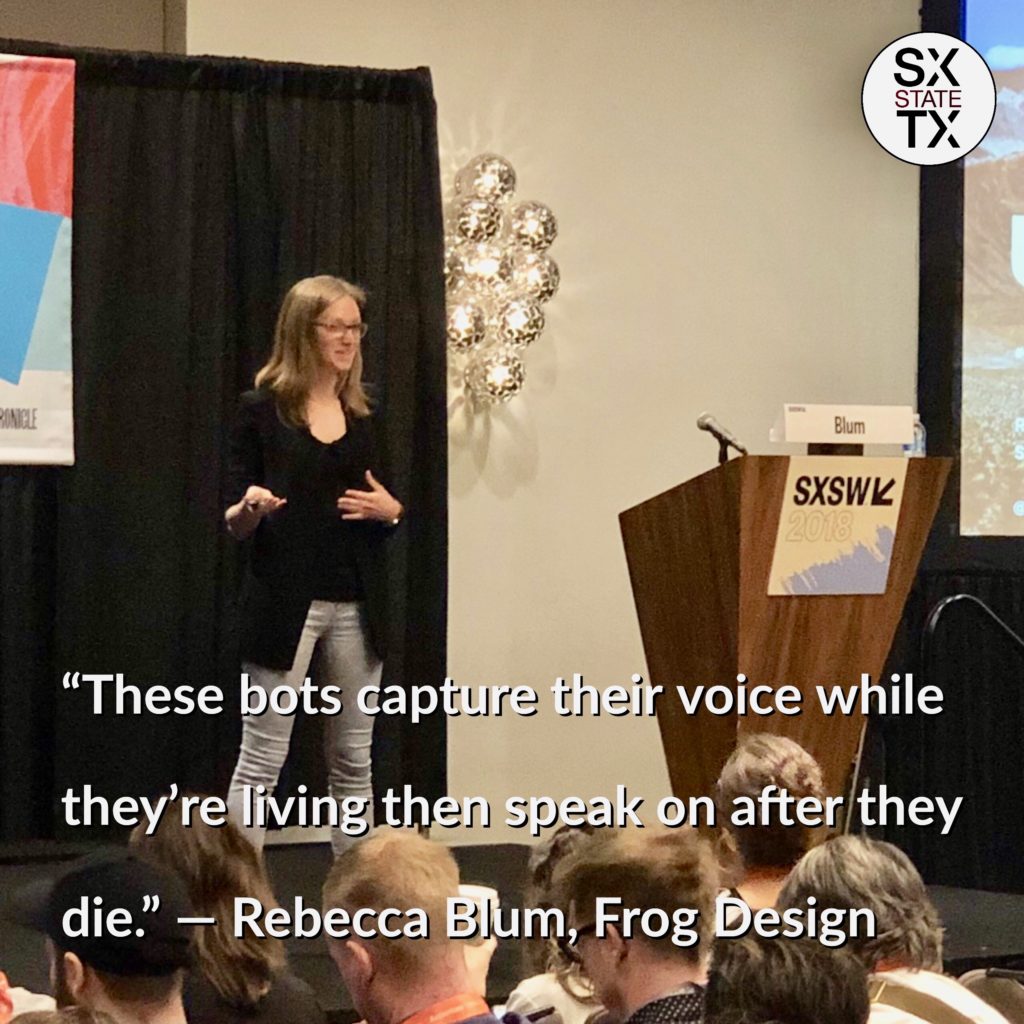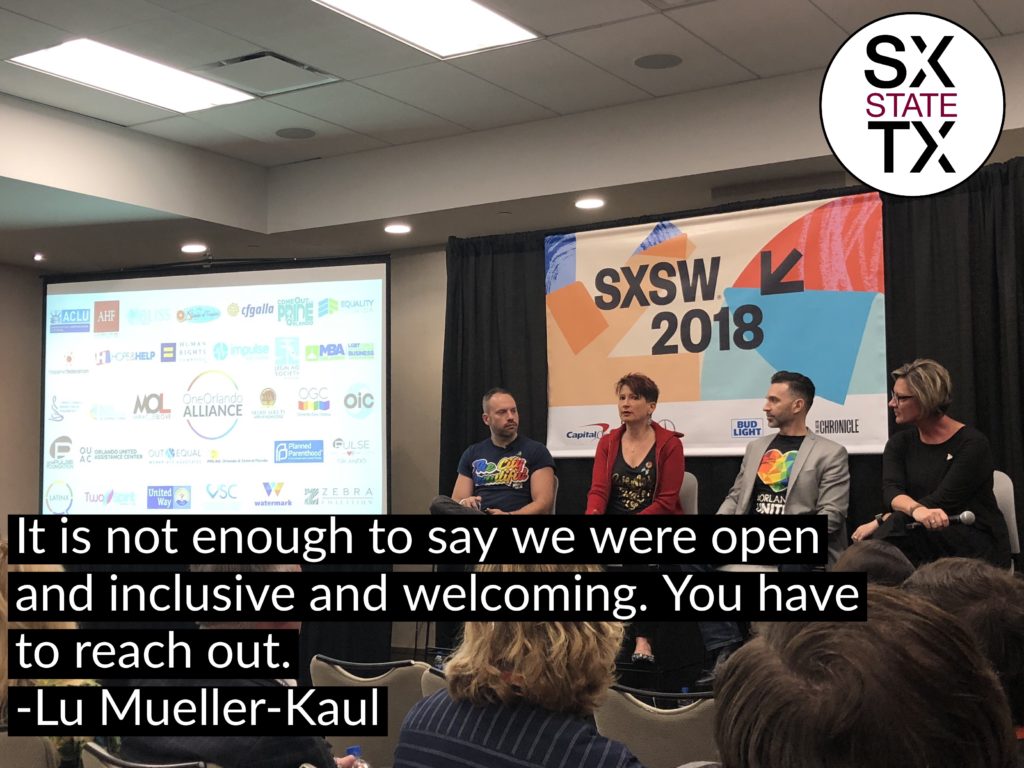We hit the ground running in day two. More panels on the schedule than day one, and definitely more people crowding the streets of Austin.
It also hit 90 degrees today, so add some sweltering Texas weather to the mix and you’re in for an intense day.
Death and Legacy in the Digital Age

Panels covered interesting and intense topics right from the start. First up: Death.
Social media users often spend a great deal of time finessing their digital personas, how they’re represented online and how their information is stored. But what happens when people die?
That sounds like a question for religion. But as people leave behind profiles of their living selves, their profiles remain active. In some cases, accounts are hacked and stolen, and posts are made by what appear to be people who are dead.
It’s a shocking moment when it happens. Or when you get a notification from a dead relative on Facebook, you’d likely be in for a shock.
These interactions, however, may become common place in the future.
Rebecca Blum of frog design, presented the legacy of what she calls “NecroTech,” technology and product trends that change the way people perceive death. Photography has done this, where families posed next to cadavers as a means of remembrance.
Digital technology will do this soon. Well, actually, it already is.
Apps in Japan can display recorded augmented reality messages from dead relatives, and one developer created a bot she can text from the messages and emails she and a deceased friend share.
Kind of creepy, right?
That’s an accurate way to think. There’s what Blum called an “uncanny valley,” which people often reference when distinguishing robots and humans. Certain features of robots become so humanistic that we feel their characteristics are encroaching on our side of the valley, and we begin to feel uncomfortable.
She called the development of apps to continue digital personas post-mortem an “uncanny death valley,” when the digital activities of the dead seem so lifelike we begin to feel uncomfortable. From the perspective of an older millennial, that digital persona of the dead may seem weird, creepy, unnecessary. But as generations become increasingly more digital native, the idea isn’t so far-fetched.
I feel this area of digital development could start trending very soon, and social media accounts like Twitter and Facebook and data for user profiles from Google are slowly adding protocol for what happens to your digital persona after you die and who has control over it.
Interesting questions that not many people consider, but I found this panel to be eye-opening.
After Pulse — Creating an LGBTQ+ Alliance in Orlando

In the hours following the Pulse Nightclub shooting and terror attack, the public and LGBTQ+ and Latinx community leaders alike woke up to early morning phone notifications detailing the horrific events that unfolded. The groups had to mobilize, provide aid and, possibly the most daunting feat, unite.
Often overshadowed by the response from law enforcement, government agencies and corporations, non-profit community organizations also begin assisting in aid as well.
This becomes tricky, as separate organizations that sometimes have to fight each other for funding had to come together to help the victims and survivors. Some don’t even have each other’s phone numbers, not out of malice, but they’ve just never needed to be connected. Until now, when 49 innocent lives were lost at the hands of hate.
Herein lies the role of social media, as a coalition and stronger, coherent community began to form in the aftermath.
As LGBTQ and Latinx non-profits began to organize and mobilize, one unexpected and key asset helped the groups find volunteers and aid across a national network. Leaders turned to Facebook in search of volunteers, especially for translators.
Nearly immediately, an organization of translators was mobilized and volunteered their services.
From getting in contact with other community leaders to reaching out to allies and volunteers across the country, organizers turned to social media
Social media can quickly access connections and spread calls to action, and former board president of the Orlando LGBTQ Chamber of Commerce explained how in the days, weeks and months following tragedy, social media became an important tool in building a coalition that remains active to this day.
This coalition continues to work in the LGBTQ+ and Latinx community to stage memorials and days of remembrance. The work of the speakers was truly inspiring and showed that reaching out and connecting groups in the community lifts everyone up.
These coalitions need to be formed ahead of tragedy to make relief efforts go smoother. Even further, these coalitions begin fostering large communities that may erase hate all together, someday in the future.
I’m typing this post from a booth at the Awesomest Journalism Party Ever (that’s a title, not a description. Though it’s pretty great). Sponsored by the UT Knight Foundation, we’ve met people from ISOJ and the Texas Tribune. It’s time to get a plate of food and a drink. We’ve earned it.
Up tomorrow: Arnold Schwarzenegger, the trade show, and hopefully I’ll finally make it into Mashable House and YouTube House.
